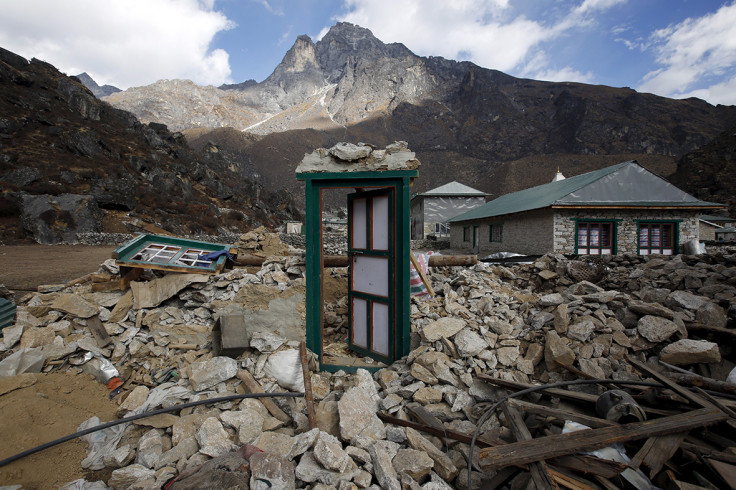Nepal earthquake one year on: Himalayan region has 'much worse events in not too distant future'

Nepal could suffer a major earthquake with a far higher death toll than the tremor which killed more than 8,000 people in April 2015, scientists have warned ahead of the first anniversary of the natural disaster.
John McCloskey, a professor of geophysics at the University of Ulster, told IBTimes UK the Himalayan region "has very much worse events" in the future, which made earthquake resilience a major priority in the area.
"The main message that rings out from Nepal – and from Haiti, and Muzaffarabad, and Sichuan, and Bam – is that we can't keep getting lucky forever and that the Himalayan thrust, the shallow inclined fault on which India is slipping against Asia, as well as other well-known seismic black spots, have very much worse events in their – probably not too distant – future," Prof McCloskey said. "Earthquake resilience building is one of the great priorities facing many developing countries."
The 7.8 magnitude which struck Nepal on 25 April 2015 released 16 times the energy of the 2010 Haiti earthquake, where the estimated number of deaths ranged between 100,000 and 300,000. Hundreds of aftershocks followed, including one of magnitude 7.3.
"The Nepal earthquake killed around 8,000 people and caused widespread devastation for the country – estimated to be up to 50% of national GDP – but many of us would have expected a greater death toll and more destruction from this type of event," Prof McCloskey said.
"The event produced very bad shaking but given that the greatest energy release was almost directly below Kathmandu many believe that the death toll could have been much greater. A much smaller event in Haiti in 2010 is estimated to have killed up to 300,000 and put the country on its knees economically, probably for decades."

Research published in Nature Geoscience in January showed the slip from the Nepal earthquake stopped at a depth of 11km along the fault that runs beneath the capital Kathmandu, meaning the massive underground faultline is still under enormous pressure. The upper section of the fault did not rupture during the earthquake, meaning another major earthquake could strike the region within years or decades, rather than the centuries which typically elapse between earthquakes.
Nepal rests on a major faultline between the Indian and Eurasian tectonic plates, making the small Himalayan nation one of the most seismically dangerous regions in the world. The earthquake on 25 April 2015 was felt as far afield as India, Pakistan and Bangladesh and was followed by more than 300 aftershocks. It was the deadliest earthquake to hit Nepal in more than 80 years and caused estimated economic damage of around $10bn (£6.9bn, €8.8bn)
McCloskey said more needed to be done in terms of disaster preparation in the Himalayan region to try to limit the destruction caused by future earthquakes, particularly in developing areas.
"Unfortunately, to date, scientists have failed to persuade many governments of the inevitability of future seismic disasters and the death toll in earthquakes continues to rise," he said. "We scientists need to work on our persuasive powers; governments and international organisations need to work on their hearing."
In the last week, major earthquakes have struck the Honshu region of Japan and Ecuador, both countries located along the Pacific "ring of fire". Around 48 people were killed in the Japanese quakes and at least 500 people are believed to have died in the Ecuadorian tremors, with hundreds more unaccounted for in the south American state.
© Copyright IBTimes 2025. All rights reserved.






















